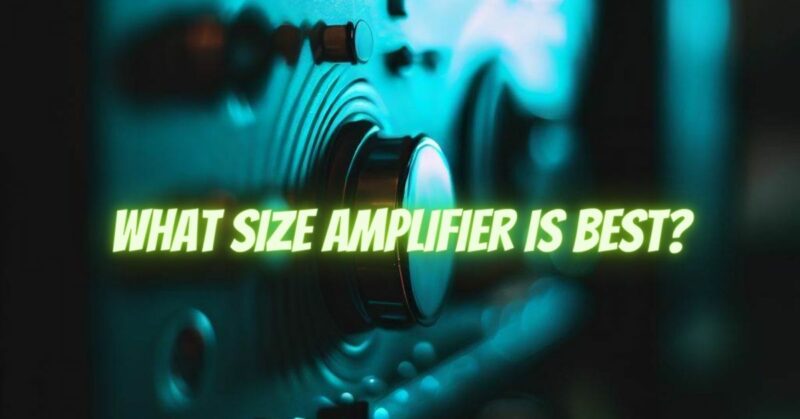When it comes to amplifiers, one size does not fit all. The size of an amplifier plays a crucial role in shaping your sound, defining its volume capabilities, and determining its suitability for different environments and applications. In this article, we will explore the factors to consider when choosing the size of an amplifier, helping you find the perfect fit for your musical needs and preferences.
- Power Output: Matching Your Needs
One of the primary considerations when selecting an amplifier size is its power output. The power rating of an amplifier is typically measured in watts and represents the maximum volume it can produce. Consider the intended use of the amplifier: Are you playing in a small bedroom, practicing with a band, or performing in large venues? For home practice or small gigs, lower wattage amplifiers (around 10-30 watts) may suffice. For larger stages or venues, higher wattage amplifiers (50 watts or more) are recommended to ensure sufficient volume and headroom.
- Portability: On the Go
Portability is another crucial factor, especially for musicians who frequently travel or perform in various locations. Smaller amplifiers are generally more lightweight and compact, making them easier to transport. If you anticipate moving your amplifier frequently or playing in different venues, a smaller size amplifier (such as a combo amp or a compact head and cabinet) can offer convenience without sacrificing tone and performance.
- Speaker Configuration: Tailoring Your Sound
The size of the amplifier also affects the speaker configuration, which plays a significant role in shaping your sound. Smaller amplifiers often feature a single speaker, while larger amplifiers may have multiple speakers or speaker cabinets. Single-speaker configurations can provide a focused sound with tighter low-end response, ideal for certain genres like blues or jazz. Multiple-speaker configurations, such as 2×12″ or 4×12″ cabinets, offer a wider sound dispersion and increased low-end presence, suitable for genres that require more power and projection, such as rock or metal.
- Venue and Application: Fit for the Occasion
Consider the specific venues and applications where you will be using your amplifier. For bedroom practice or small studio environments, a compact amplifier or even a headphone amp may be sufficient. If you primarily perform in small to medium-sized clubs or rehearsal spaces, a mid-sized amplifier with moderate power output can deliver the necessary volume and tone. On the other hand, larger venues or outdoor stages may require higher wattage amplifiers or the use of a PA system for proper coverage and projection.
- Tone and Features: Tailoring Your Tonal Palette
Amplifiers come in various sizes, each with its own tonal characteristics and features. Smaller amplifiers often excel at producing natural tube overdrive at lower volume levels, providing a desirable “break-up” tone. On the other hand, larger amplifiers can offer more headroom and clean headspace, allowing pedals and effects to shine through without distortion. Consider your preferred genre, playing style, and desired tonal palette when choosing the amplifier size that best complements your sonic vision.
Conclusion:
The ideal size amplifier is a subjective choice that depends on your specific needs, playing style, and musical goals. By considering factors such as power output, portability, speaker configuration, venue requirements, and desired tonal characteristics, you can find the perfect fit for your musical journey. Whether it’s a compact practice amp, a mid-sized combo, or a larger head and cabinet setup, selecting the right size amplifier ensures that you have the power, portability, and tone necessary to unleash your musical creativity with confidence and precision.


